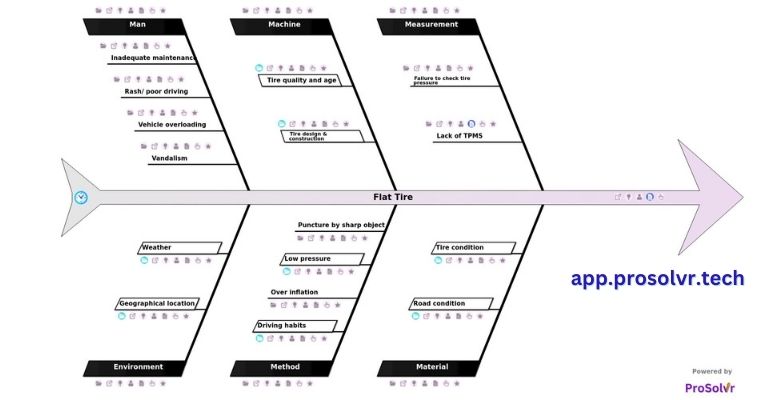Flat Tire Causes
A flat tire refers to a situation in which one of the tires on a vehicle loses air pressure. It causes the tire to become deflated and no longer functional. This can lead to the tire appearing visibly flat or significantly underinflated. A flat tire can affect a vehicle's handling, stability, and safety and can result in the need for immediate repair or replacement.
Preventing flat tires involves regular tire maintenance, including checking tire pressure, inspecting for damage, and keeping tires properly inflated. Additionally, driving cautiously, avoiding rough road hazards, and being aware of the condition of your tires can help reduce the risk of flats.
A structured cause analysis is always easy to understand when experienced visually. This fishbone is a methodical root cause analysis for flat tire in a vehicle. It shares knowledge about the factors that affect tire condition, internal air pressure which results in leakage or bursting. One can study this template thoroughly to gain knowledge of the contributing factors.
Who should use the Flat Tire template?
Why use this template?








